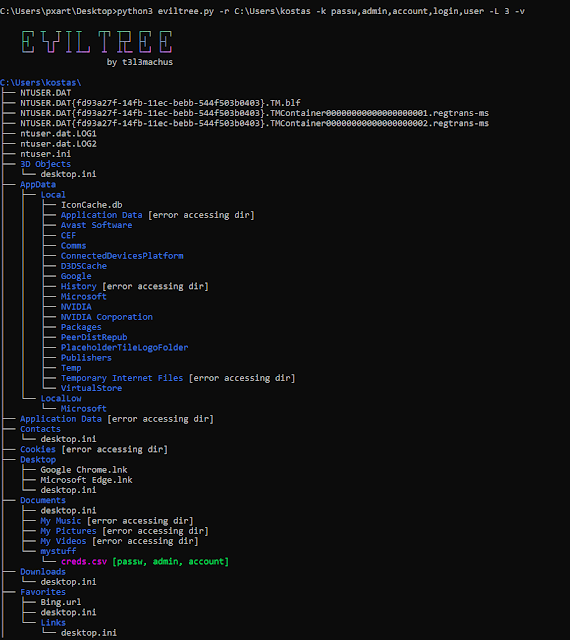A standalone python3 remake of the classic "tree" command with the additional feature of searching for user provided keywords/regex in files, highlighting those that contain matches. Created for two main reasons:
While searching for secrets in files of nested directory structures, being able to visualize which files contain user provided keywords/regex patterns and where those files are located in the hierarchy of folders, provides a significant advantage. "tree" is an amazing tool for analyzing directory structures. It's really handy to have a standalone alternative of the command for post-exploitation enumeration as it is not pre-installed on every linux distro and is kind of limited on Windows (compared to the UNIX version).Usage Examples
Example #1: Running a regex that essentially matches strings similar to: password = something against /var/www
Example #2: Using comma separated keywords instead of regex:
Disclaimer: Only tested on Windows 10 Pro.
Further Options & Usage Tips
Notable features:
Regex -x search actually returns a unique list of all matched patterns in a file. Be careful when combining it with -v (--verbose), try to be specific and limit the length of chars to match. You can search keywords/regex in binary files as well by providing option -b. You can use this tool as the classic "tree" command if you do not provide keywords -k and regex -x values. This is useful in case you have gained a limited shell on a machine and want to have "tree" with colored output to look around. There's a list variable filetype_blacklist in eviltree.py which can be used to exclude certain file extensions from content search. By default, it excludes the following: gz, zip, tar, rar, 7z, bz2, xz, deb, img, iso, vmdk, dll, ovf, ova. A quite useful feature is the -i (--interesting-only) option. It instructs eviltree to list only files with matching keywords/regex content, significantly reducing the output length:.png)
 1 year ago
134
1 year ago
134 


















 Bengali (Bangladesh) ·
Bengali (Bangladesh) ·  English (United States) ·
English (United States) ·